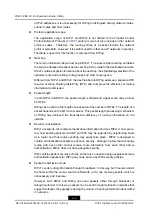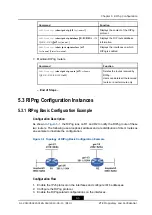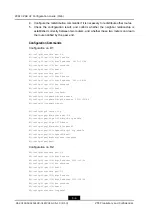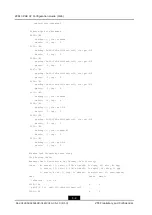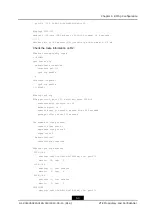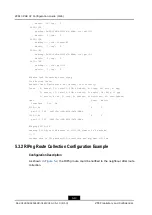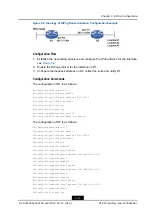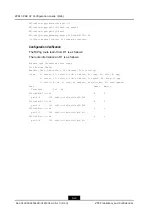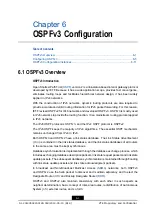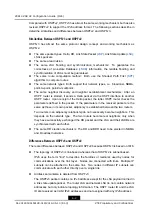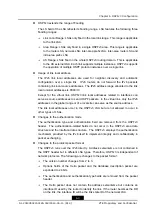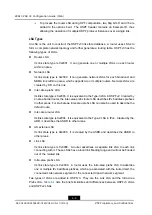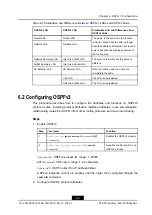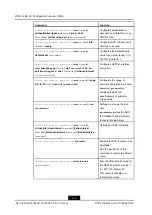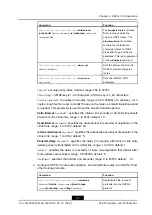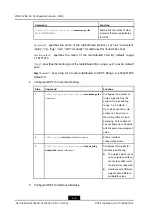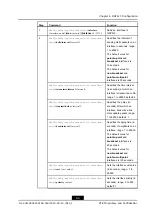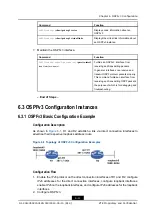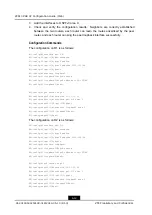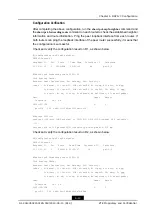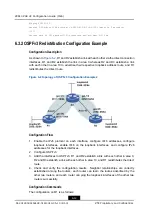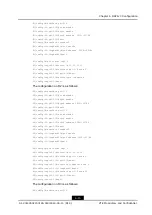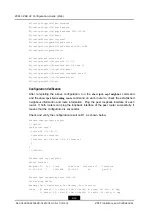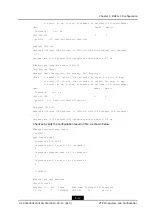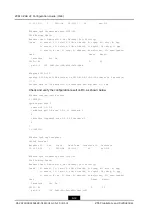
Chapter 6 OSPFv3 Configuration
l
OSPFv3 extends the range of flooding
The LS field of the LSA reflects its flooding range. LSA features the following three
flooding ranges:
à
Link Local Range: LSAs only flood in the local link range. This range is applicable
to the link LSA.
à
Area Range: LSAs only flood in a single OSPFv3 area. This range is applicable
to the router LSA, network LSA, inter-area prefix LSA, inter-area router LSA and
intra-area prefix LSA.
à
AS Range: LSAs flood in the whole OSPFv3 routing domain. This is applicable
to the AS external LSA. Each link supports multiple instances. OSPFv3 supports
the operation of multiple OSPF protocol instances over a single link.
l
Usage of link local address.
The IPv6 link local addresses are used for neighbor discovery and automatic
configuration over a single link.
IPv6 routers do not forward the IPv6 packets
containing link local source addresses. The IPv6 address range allocated to the link
local unicast addresses is FE80/10.
Except for the virtual link, OSPFv3 link local addresses related to interfaces can
serve as source addresses to send OSPF packets. In the virtual link, only the IPv6
addresses in the global range or of a local site can serve as the source address.
The link local addresses occur in the OSPFv3 LSA but are not allowed to occur in
other types of LSAs.
l
Changes to the authentication mode
The authentication type and authentication field are removed from the OSPFv3
header. The authentication-related fields do not occur in the OSPFv3 area data
structure and the interface data structure. The OSPFv3 employs the authentication
mechanism provided by the IPv6 itself to implement integrity and confidentiality in
packet exchanging.
l
Changes to the protocol packet format
The OSPFv3 runs over the IPv6 directly. Address semanteme is not contained in
the OSPF header but in different LSA types. Therefore, OSPFv3 is independent of
network protocols. The following are changes to the packet format:
à
The version number changes from 2 to 3.
à
Options fields of the Hello packet and the database description packet are
expanded to 24 bits.
à
The authentication and authentication type fields are removed from the packet
header.
à
The Hello packet does not contain the address semanteme but contains an
interface ID used by the router to identify the link. If the router becomes the DR
on the link, the interface ID will be the link state ID of the network LSA.
6-3
SJ-20140504150128-018|2014-05-10 (R1.0)
ZTE Proprietary and Confidential
Содержание ZXR10 ZSR
Страница 12: ...This page intentionally left blank IV SJ 20140504150128 018 2014 05 10 R1 0 ZTE Proprietary and Confidential ...
Страница 306: ...Figures This page intentionally left blank IV SJ 20140504150128 018 2014 05 10 R1 0 ZTE Proprietary and Confidential ...
Страница 308: ...This page intentionally left blank VI SJ 20140504150128 018 2014 05 10 R1 0 ZTE Proprietary and Confidential ...


